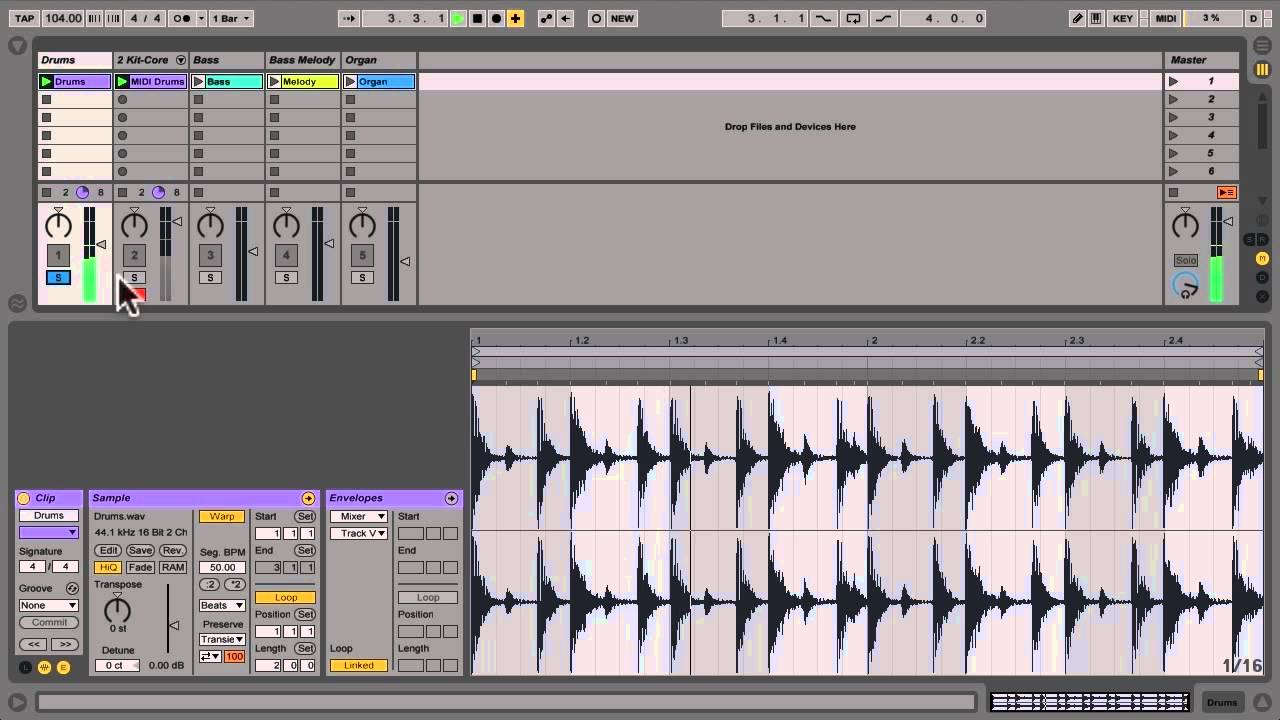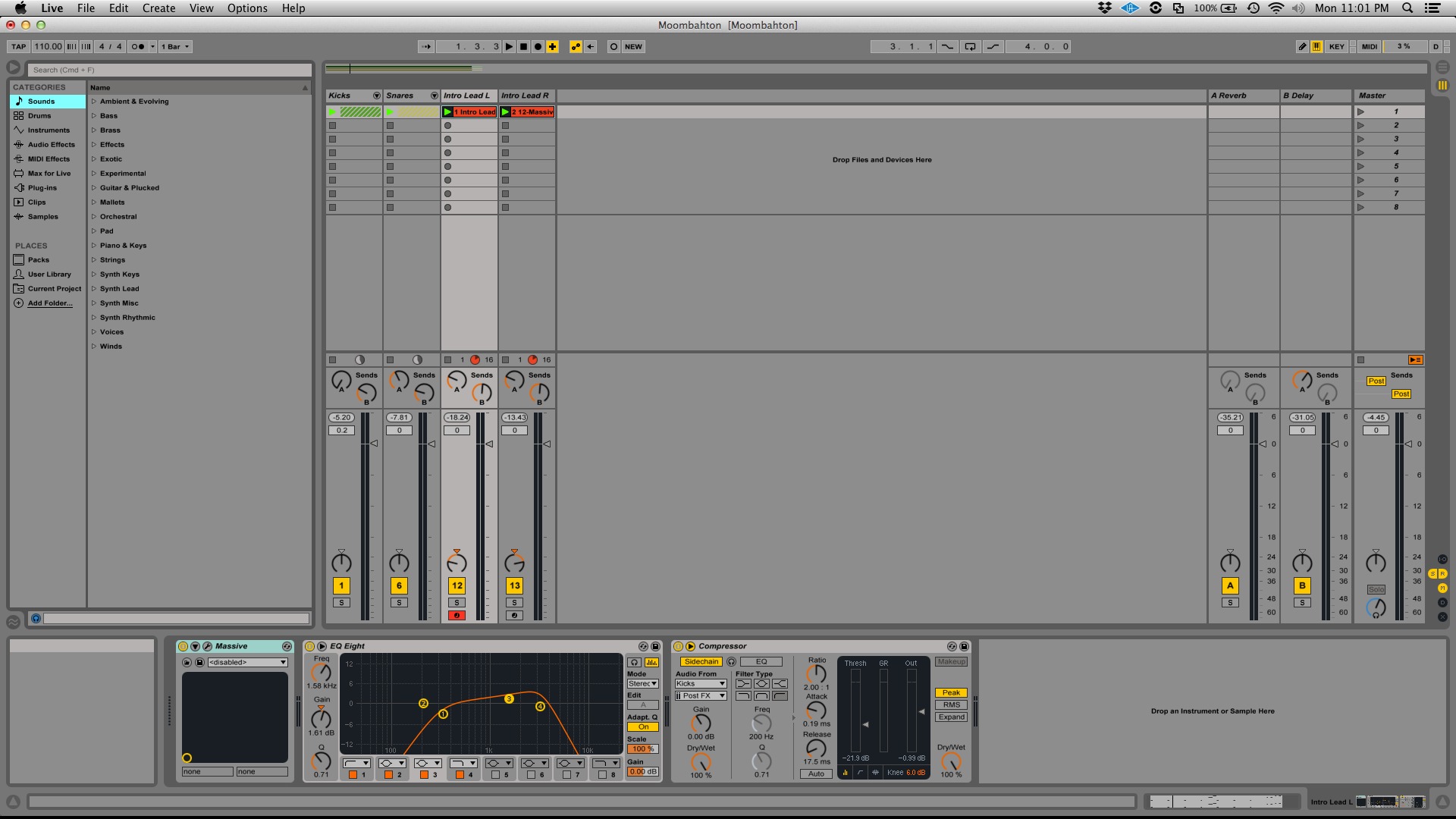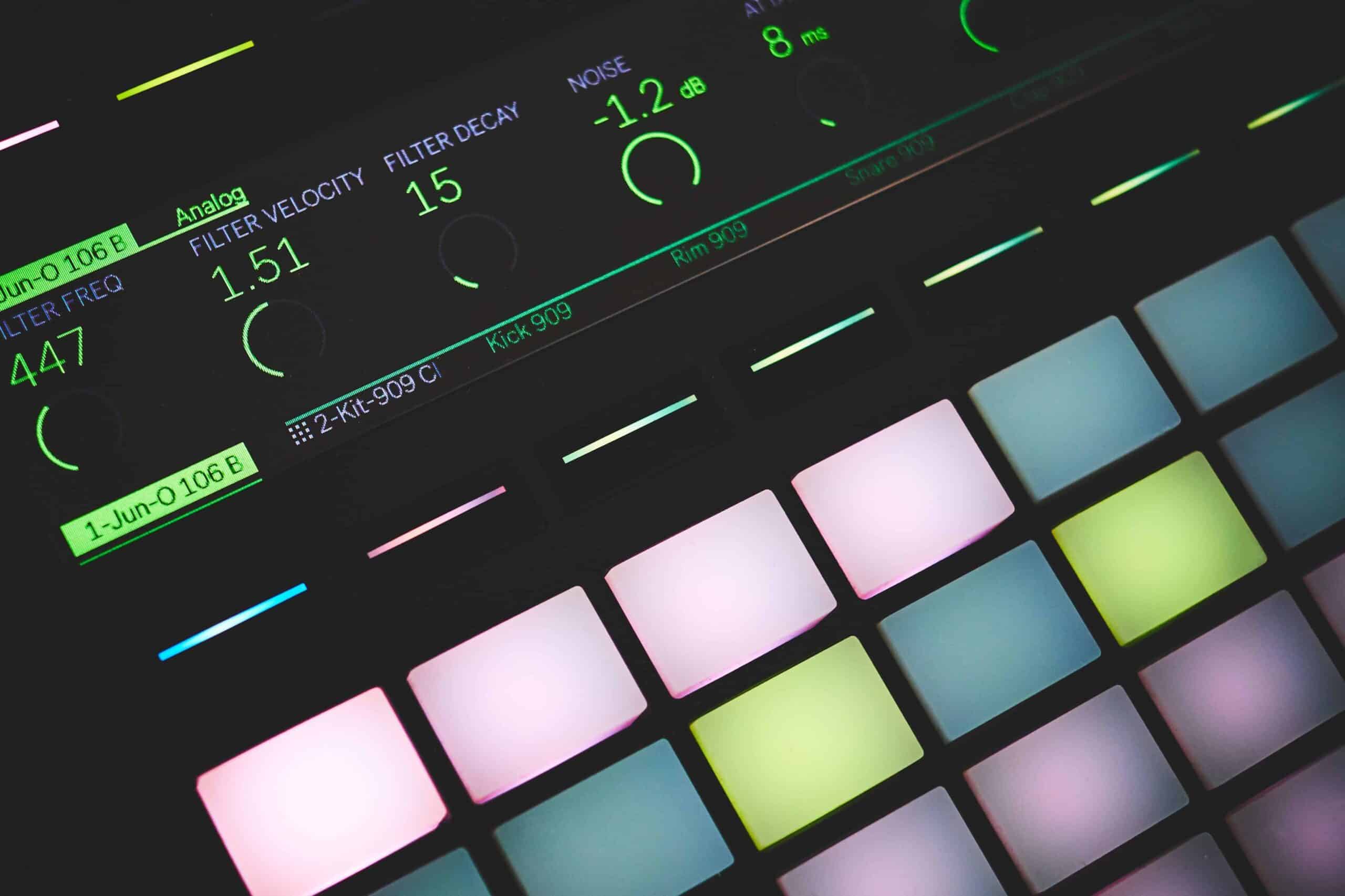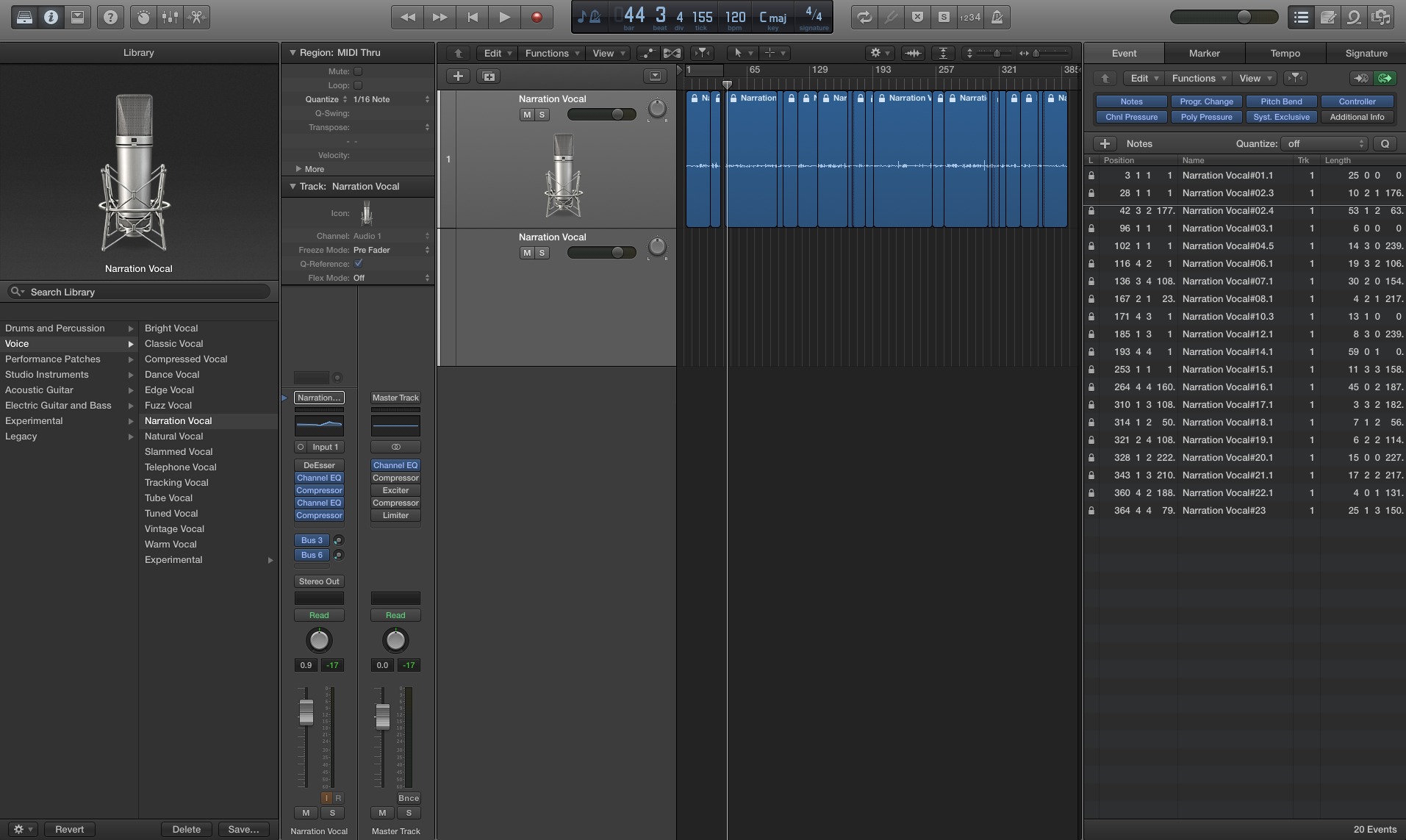Home>Production & Technology>MIDI>How To Insert MIDI Clip In Ableton
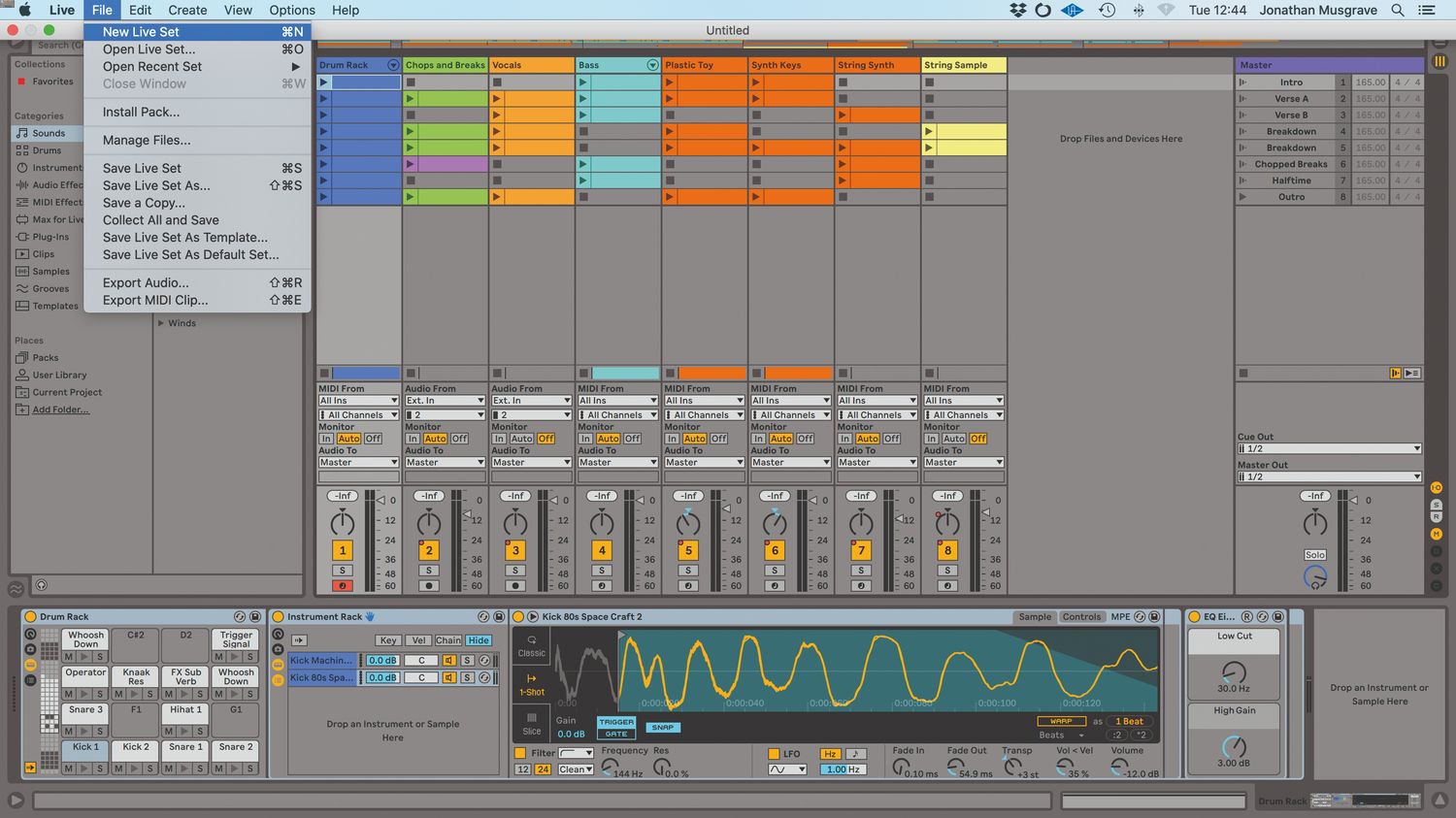

MIDI
How To Insert MIDI Clip In Ableton
Modified: February 22, 2024
Learn how to insert MIDI clips in Ableton with this step-by-step guide. Discover the essential tips and tricks for working with MIDI in Ableton.
(Many of the links in this article redirect to a specific reviewed product. Your purchase of these products through affiliate links helps to generate commission for AudioLover.com, at no extra cost. Learn more)
Table of Contents
Introduction
When it comes to music production, MIDI (Musical Instrument Digital Interface) plays a pivotal role in creating and manipulating musical elements. Whether you're a seasoned producer or just starting your music production journey, understanding how to work with MIDI clips is essential. In this article, we'll delve into the process of inserting a MIDI clip in Ableton Live, a popular digital audio workstation (DAW) known for its robust MIDI capabilities.
MIDI clips serve as the building blocks for creating melodies, harmonies, and rhythms within a digital environment. By learning how to insert and manipulate MIDI clips in Ableton Live, you'll gain the ability to craft intricate musical arrangements and unleash your creativity in unprecedented ways.
In the following sections, we'll walk through a step-by-step guide on how to insert a MIDI clip in Ableton Live. From setting up a MIDI track to importing and editing MIDI clips, you'll gain valuable insights into harnessing the power of MIDI within this versatile DAW. So, let's dive in and explore the exciting world of MIDI production in Ableton Live.
Step 1: Open Ableton Live
Before delving into the intricacies of MIDI clip insertion, the first step is to launch Ableton Live on your computer. Ableton Live, renowned for its intuitive interface and powerful MIDI capabilities, provides a conducive environment for creating and manipulating musical elements.
Upon opening Ableton Live, you are greeted by a visually appealing workspace that seamlessly integrates audio and MIDI tracks, offering a comprehensive platform for music production. The software's user-friendly layout and customizable features cater to the diverse needs of musicians, producers, and sound designers.
As the application springs to life, you are presented with a myriad of options, from creating new projects to accessing existing ones. The straightforward navigation within Ableton Live allows for swift access to essential functions, enabling users to focus on their creative endeavors without unnecessary hindrances.
In addition to its welcoming interface, Ableton Live's robust MIDI functionality sets the stage for seamless MIDI clip insertion and manipulation. The software's MIDI capabilities empower users to craft intricate musical arrangements, from melodic phrases to rhythmic patterns, with unparalleled flexibility and precision.
By opening Ableton Live, you embark on a journey into a world of musical possibilities, where MIDI serves as a fundamental tool for shaping and expressing musical ideas. With the software at your fingertips, you are poised to explore the boundless potential of MIDI production within the dynamic environment of Ableton Live.
As the gateway to a wealth of creative opportunities, opening Ableton Live marks the initial step toward harnessing the power of MIDI and unleashing your musical vision within a sophisticated yet accessible digital audio workstation.
In the subsequent steps, we'll delve deeper into the process of creating and manipulating MIDI clips, equipping you with the knowledge and skills to navigate the exciting realm of MIDI production within Ableton Live.
Step 2: Create a MIDI Track
In Ableton Live, the creation of a MIDI track serves as a foundational step in harnessing the full potential of MIDI production. To embark on this process, navigate to the software's interface and identify the area designated for track creation. Typically, this area is located within the main workspace, where audio and MIDI tracks coalesce to form the backbone of your musical endeavors.
Upon locating the track creation area, initiate the process by selecting the option to add a new track. In the context of MIDI production, it is essential to specify the track type as MIDI, distinguishing it from audio tracks and signaling the software to allocate MIDI-related functionalities to the newly created track.
Once the MIDI track is established, you are presented with a canvas primed for musical expression. This canvas, represented by the MIDI track within Ableton Live, serves as a dynamic space where musical ideas materialize into MIDI clips, laying the groundwork for intricate compositions and arrangements.
The creation of a MIDI track in Ableton Live not only signifies the inception of a musical journey but also signifies the convergence of creativity and technology. Through this process, you establish a conduit for musical expression, tapping into the vast palette of sounds and instruments available within the digital realm.
As you embark on the creation of a MIDI track, envision it as a blank canvas awaiting your artistic input. With each MIDI track you create, you open a gateway to a realm of sonic possibilities, where melodies, harmonies, and rhythms converge to form captivating musical tapestries.
In the subsequent steps, we will delve deeper into the intricacies of MIDI clip insertion, leveraging the MIDI track as a springboard for crafting musical elements within the rich and versatile environment of Ableton Live. Through this journey, you will gain a deeper understanding of MIDI production and its pivotal role in shaping musical compositions within a digital landscape.
Step 3: Import MIDI Clip
Importing MIDI clips into Ableton Live is a pivotal step in the music production process, as it infuses your projects with a diverse array of musical elements. To initiate this process, navigate to the browser section of Ableton Live, where an extensive library of MIDI clips awaits your exploration. Within this repository, you'll encounter a wealth of pre-existing MIDI clips, ranging from melodic phrases to rhythmic patterns, designed to catalyze your creative endeavors.
As you peruse the MIDI clip library, immerse yourself in the myriad of musical possibilities. From soulful piano melodies to pulsating drum sequences, the library serves as a treasure trove of musical inspiration. Upon identifying a MIDI clip that resonates with your creative vision, simply drag and drop it into the MIDI track within the Ableton Live workspace.
Upon importing the MIDI clip, it seamlessly integrates into the MIDI track, aligning with the tempo and musical context of your project. This effortless integration exemplifies the user-friendly nature of Ableton Live, where musical elements harmoniously coalesce to form cohesive compositions.
Furthermore, Ableton Live empowers you to customize and manipulate imported MIDI clips to suit your artistic vision. Whether it entails adjusting the note velocities, modifying the rhythmic structure, or transposing the musical elements, the software provides an array of tools for sculpting MIDI clips with precision and finesse.
Importing MIDI clips into Ableton Live not only enriches your musical projects with diverse sonic textures but also expedites the creative process, allowing you to explore new musical avenues with ease and fluidity. Through this seamless integration of MIDI clips, you infuse your compositions with depth and character, breathing life into your musical endeavors within the dynamic environment of Ableton Live.
In the subsequent steps, we will delve into the nuances of editing and refining MIDI clips, equipping you with the knowledge and skills to shape and mold musical elements within the captivating realm of MIDI production in Ableton Live.
Step 4: Adjust MIDI Clip Length and Position
In the realm of MIDI production, the ability to fine-tune the length and position of MIDI clips is paramount, as it empowers you to craft seamless musical arrangements and synchronize elements within your projects. Within the dynamic workspace of Ableton Live, manipulating the length and position of MIDI clips is a straightforward yet powerful process, offering a wealth of creative possibilities.
Upon importing a MIDI clip into a track within Ableton Live, you are presented with the flexibility to adjust its length to align with specific musical phrases or sections of your composition. This granular control over the temporal scope of MIDI clips allows for precise structuring of musical elements, ensuring that they seamlessly integrate into the overarching sonic tapestry.
To adjust the length of a MIDI clip, simply hover the cursor over the clip's edge until the resizing icon appears. Once the resizing icon is visible, drag the edge of the MIDI clip to extend or shorten its duration, aligning it with the desired segment of your composition. This intuitive process enables you to tailor the duration of MIDI clips with precision, facilitating seamless transitions and musical coherence within your projects.
Furthermore, manipulating the position of MIDI clips within the timeline of Ableton Live is instrumental in orchestrating the flow and arrangement of musical elements. By relocating MIDI clips to specific temporal coordinates, you exercise control over the chronological placement of musical phrases, facilitating the construction of compelling musical narratives and structures.
To reposition a MIDI clip, simply click and drag it to the desired location within the timeline. This seamless relocation process allows for fluid adjustments, enabling you to craft dynamic musical arrangements and synchronize MIDI clips within the overarching composition. Whether it involves aligning melodic motifs, juxtaposing rhythmic patterns, or orchestrating harmonic progressions, the ability to manipulate the position of MIDI clips empowers you to sculpt cohesive and expressive musical landscapes.
In essence, the capacity to adjust the length and position of MIDI clips within Ableton Live epitomizes the software's commitment to providing a conducive environment for musical expression and manipulation. Through these nuanced adjustments, you wield the power to shape and refine musical elements, fostering a seamless integration of MIDI clips within your creative endeavors.
As we traverse the intricacies of MIDI production within Ableton Live, honing the ability to manipulate MIDI clip length and position equips you with the tools to craft compelling musical compositions and breathe life into your artistic vision within the digital realm of music production.
Step 5: Edit MIDI Clip
In the realm of music production, the process of editing MIDI clips within Ableton Live transcends mere refinement; it embodies a transformative journey where musical ideas evolve and crystallize into captivating compositions. As you venture into the realm of MIDI clip editing, a rich tapestry of creative possibilities unfurls before you, beckoning you to sculpt and shape musical elements with precision and finesse.
Upon importing a MIDI clip into the Ableton Live workspace, you are bestowed with a myriad of tools and functionalities to tailor and refine its musical content. From adjusting note velocities to modifying pitch and rhythm, the software empowers you to infuse the MIDI clip with your artistic vision, breathing life into your musical endeavors.
One of the fundamental aspects of MIDI clip editing within Ableton Live is the ability to manipulate individual note properties. By selecting and modifying specific note velocities, you exert control over the dynamics and expression of the musical phrases, imbuing them with nuanced articulation and emotive depth. This granular control over note velocities allows for the creation of dynamic and expressive musical passages, enriching your compositions with a palpable sense of musicality.
Furthermore, the software facilitates seamless pitch manipulation, enabling you to transpose individual notes within the MIDI clip to achieve harmonic cohesion and melodic variation. This transformative capability empowers you to explore diverse tonalities and musical motifs, fostering a rich tapestry of melodic expressions within your compositions.
In addition to note-level adjustments, Ableton Live provides a comprehensive suite of rhythmic manipulation tools, allowing you to refine the temporal intricacies of MIDI clips. From quantizing note timings to crafting intricate rhythmic patterns, the software equips you with the means to sculpt compelling rhythmic structures, infusing your compositions with infectious grooves and rhythmic vitality.
Moreover, the integration of MIDI effects within Ableton Live amplifies the creative potential of MIDI clip editing, offering a diverse array of sonic enhancements and transformations. Whether it involves applying modulation effects to imbue the MIDI clip with expressive nuances or integrating spatial effects to craft immersive sonic landscapes, the software empowers you to elevate the musical content of MIDI clips to unprecedented heights.
As you navigate the realm of MIDI clip editing within Ableton Live, you embark on a transformative odyssey where musical ideas materialize into vibrant and expressive compositions. Through the seamless integration of editing tools and creative functionalities, you harness the power to refine and shape MIDI clips with artistic precision, fostering a dynamic interplay of musical elements within the captivating landscape of music production.
In essence, the process of editing MIDI clips within Ableton Live transcends technical refinement; it embodies a creative dialogue where musical expressions converge and evolve, culminating in captivating compositions that resonate with emotive depth and artistic ingenuity. As you embark on this creative journey, embrace the boundless potential of MIDI clip editing, and unleash your artistic vision within the dynamic realm of music production.
Conclusion
In conclusion, the process of inserting and manipulating MIDI clips within Ableton Live embodies a harmonious fusion of creativity and technological prowess. As we embarked on this journey, we delved into the fundamental steps of opening Ableton Live, creating MIDI tracks, importing MIDI clips, and refining their musical content. Each step unveiled a realm of artistic potential, empowering us to craft intricate musical arrangements and breathe life into our creative visions.
Through the seamless integration of MIDI clips within the dynamic workspace of Ableton Live, we witnessed the convergence of musical expression and technological innovation. The software's intuitive interface and robust MIDI capabilities served as catalysts for our creative endeavors, providing a conducive environment where musical ideas flourished and evolved.
Furthermore, the ability to adjust the length and position of MIDI clips within the timeline of Ableton Live epitomized the software's commitment to providing a seamless and flexible platform for musical manipulation. This granular control over temporal and spatial elements empowered us to orchestrate cohesive musical narratives and synchronize elements within our compositions with precision and finesse.
As we ventured into the realm of MIDI clip editing, a rich tapestry of creative possibilities unfurled before us, beckoning us to sculpt and shape musical elements with artistic precision. The software's comprehensive suite of editing tools and functionalities endowed us with the means to infuse MIDI clips with emotive depth, expressive nuances, and rhythmic vitality, fostering a dynamic interplay of musical elements within our compositions.
In essence, the process of inserting MIDI clips in Ableton Live transcends mere technicality; it embodies a transformative odyssey where musical ideas materialize into vibrant and expressive compositions. Through the seamless integration of MIDI clips and the creative functionalities within Ableton Live, we harnessed the power to refine and shape musical elements, culminating in captivating compositions that resonate with emotive depth and artistic ingenuity.
As we conclude this exploration of MIDI production within Ableton Live, we emerge with a deeper understanding of the pivotal role that MIDI plays in shaping musical compositions within a digital landscape. Armed with newfound knowledge and creative insights, we are poised to embark on further musical adventures, leveraging the power of MIDI to craft compelling sonic experiences and unleash our artistic vision within the dynamic realm of music production.

